Browse our collection of infographics by tag/topic
Sustainability
Standards Benefit Companies, Data Collectors, Data Users
To successfully collect data under SB 253 and SB 261, California must require data be reported in digital, machine-readable (XBRL) format. There are several good reasons for this approach.
Establishing a framework to standardize, and automate the processing of, corporate sustainability data is imperative to provide needed information to investors, researchers and policy setters who need access to timely, consistent, accurate data for decision-making.
Surety
Automating the transmission of Work-in-Process reports and financial statements to the bonding decision will help sureties, contractors, and bond agents by significantly improving the speed and efficiency in this important view of a contractor’s business.
FDTA
The Financial Data Transparency Act (FDTA) calls for the use of data standards by member agencies of the U.S. Financial Stability Oversight Council, including U.S. Treasury, the Securities and Exchange Commission (SEC), the Federal Deposit Insurance Corporation (FDIC), the Office of the Comptroller of the Currency (OCC), the Bureau of Consumer Financial Protection (CFPB), the Federal Reserve System, the National Credit Union Administration (NCUA), and the Federal Housing Finance Agency (FHFA).
Sponsored by Donnelley Financial Solutions (DFIN).
SEC filers
The SEC’s EDGAR Next program is coming in Spring, 2022. Learn about significant changes anticipated for SEC filers in terms of user management and administration, as well as the submission process. Complete a brief survey to share your feedback on this SEC program.
Need help convincing your boss that it’s important to get involved as an SEC Filer Member? Use this to help explain why it’s important to Get Serious about Data Quality.
Standard Business Reporting (SBR)
Effective data standards programs focus on results.
Are you short-cutting efforts that sabotage the quality of the image you’re trying to share with your audience?
Since the first specification was introduced in 2003, the XBRL Specification has evolved to meet changing regulatory requirements and emerging technology opportunities.
This infographic compares current models of government data collection processes with an open, non-proprietary standards-based environment. Watch a brief video comparing these systems.
Inline XBRL was approved by the SEC for operating companies and fund companies. Find out how Inline XBRL works.
Standard Business Reporting (SBR) is an essential strategy for governments looking to reduce spending and improve access to information.
- Standardize
- Streamline
- $ave
Separate agency-by-agency data requirements have consequences for everyone. Cut government spending. Reduce business burden. Adopt XBRL.
Need the 411 on what makes for a rock-solid financial data standard? We’ve developed an easy to follow piece to help you evaluate what’s involved, so you can be sure your efforts will yield data that is comprehensive, comparable, interoperable and effective.
Use Cases
Auditors evaluate the reasonableness of client projections such as future revenue growth, profitability and capital expenditure requirements. To evaluate the reasonableness of these projections, BDO USA, LLP often looks at data from similar companies within the same industry. XBRL allowed them to perform a more robust analysis with more companies over a significantly shorter time period.
Auditors evaluate the reasonableness of client projections such as future revenue growth, profitability and capital expenditure requirements. To evaluate the reasonableness of these projections, BDO USA, LLP often looks at data from similar companies within the same industry. XBRL allowed them to perform a more robust analysis with more companies over a significantly shorter time period.
Global investment research and investment management firm Morningstar has been able to reduce processing time by 90% versus processing HTML and PDF processing, which can take 20 – 30 minutes per filing.
Student-run investment fund at California State University – Northridge gained access to affordable, more timely data through XBRL. Professor Mike Phillips noted “By using XBRL data, students added 100 basis points per year to the returns on their portfolio.”
Research analysts at Accounting Observer saved 72 hours off data collection time when analyzing unremitted foreign earnings for Fortune 500 companies, compared to their process using traditional datasets.
Research Analysts || Third-party Data Providers || Auditors || Students to name a few … it’s probably time you got involved, too.
Blockchain
Changes in financial data, e.g., debt coverage ratios or loan to value ratios, trigger the execution of loan covenants in the contract. If data standards are used, smart contracts can automatically update the blockchain with payable and receivable information. No human intervention is required.

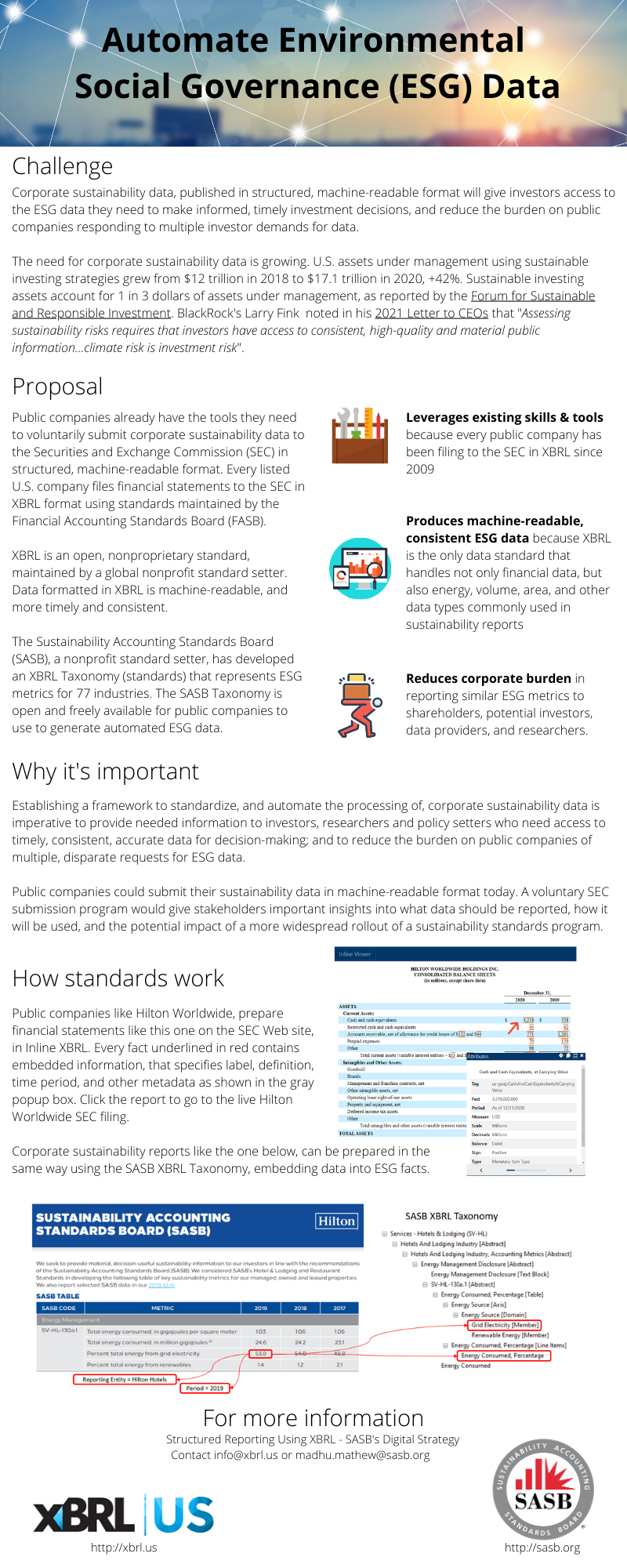
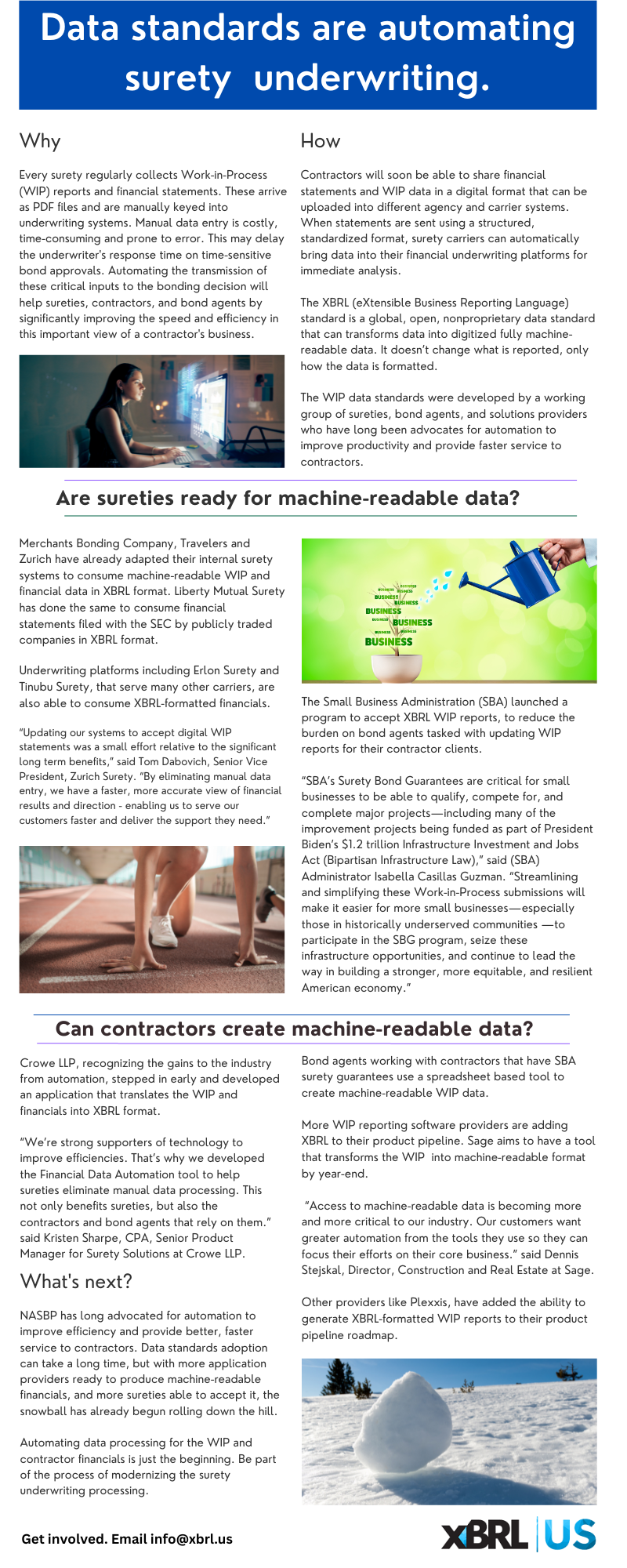
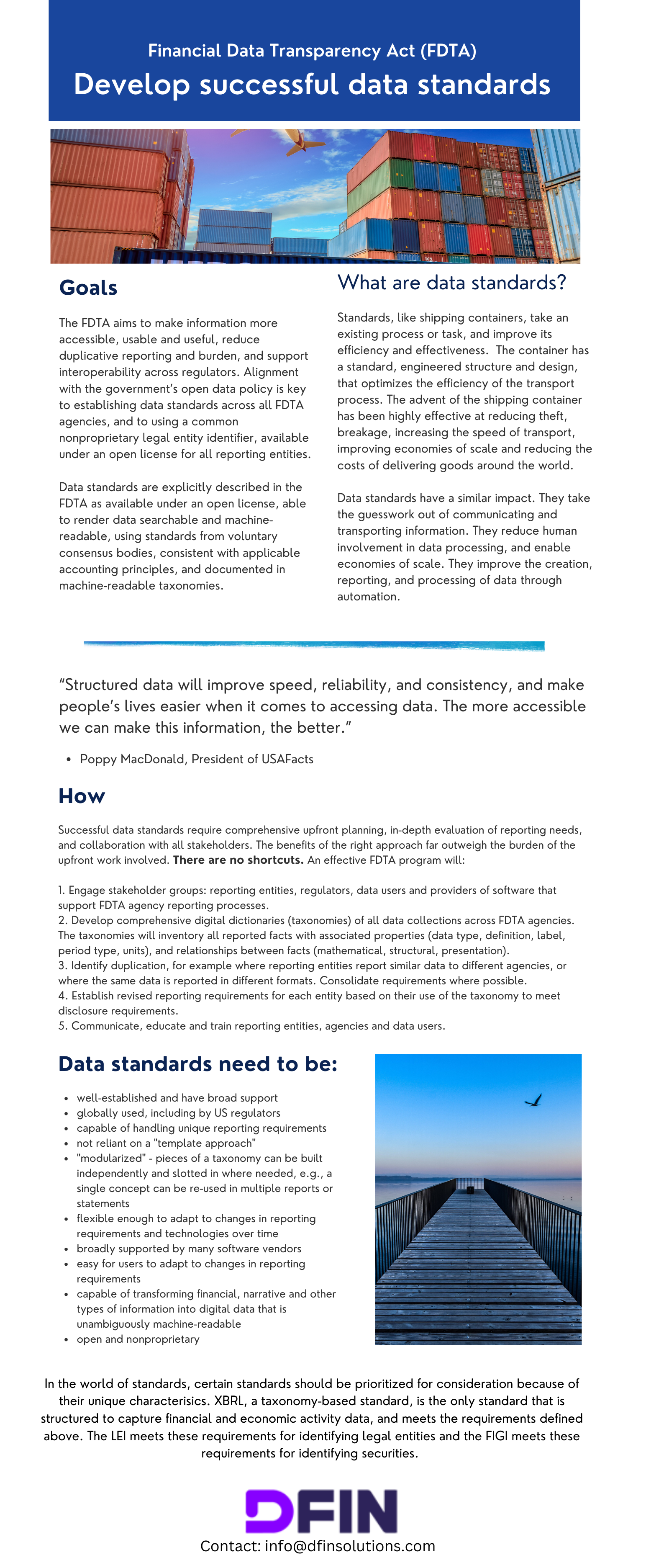
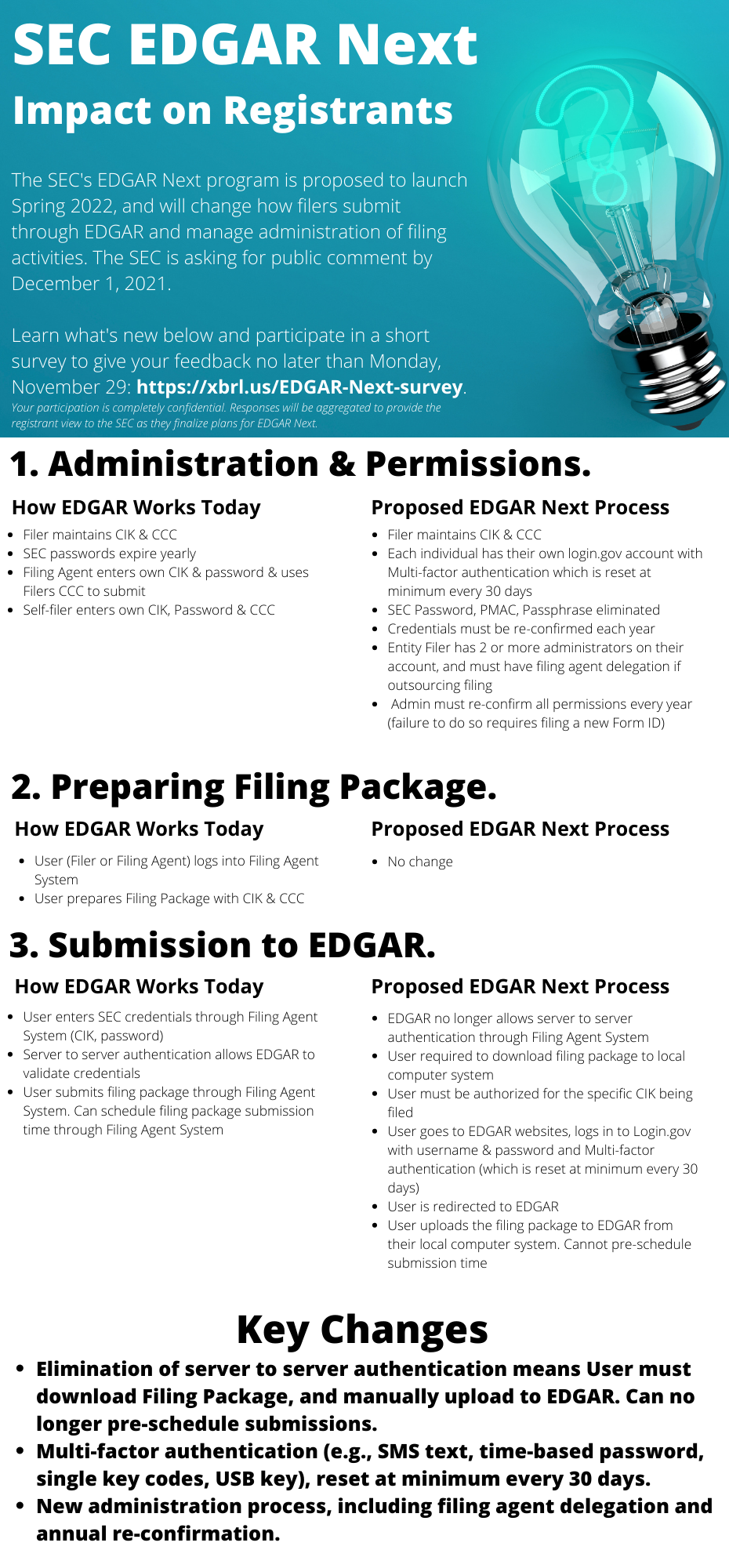
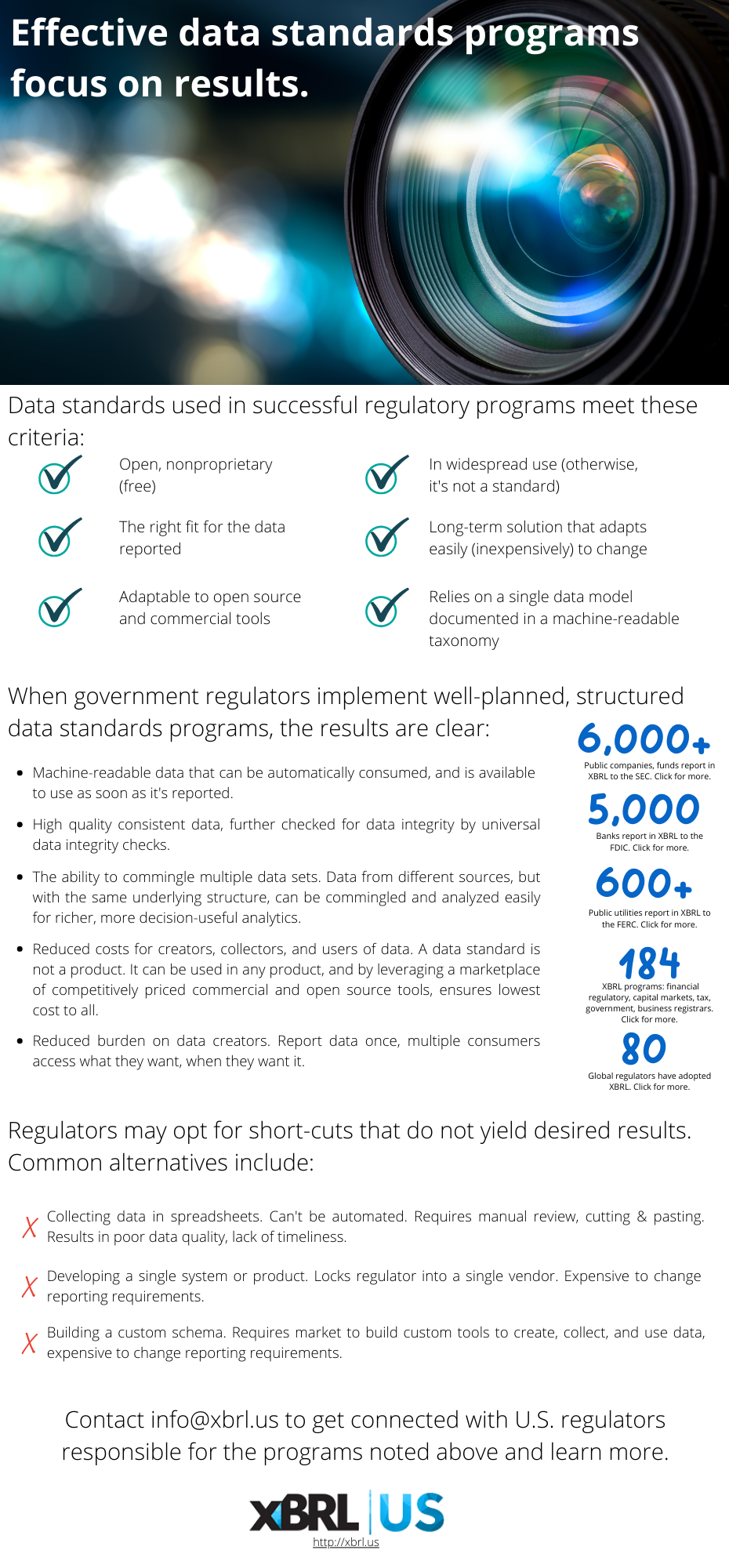
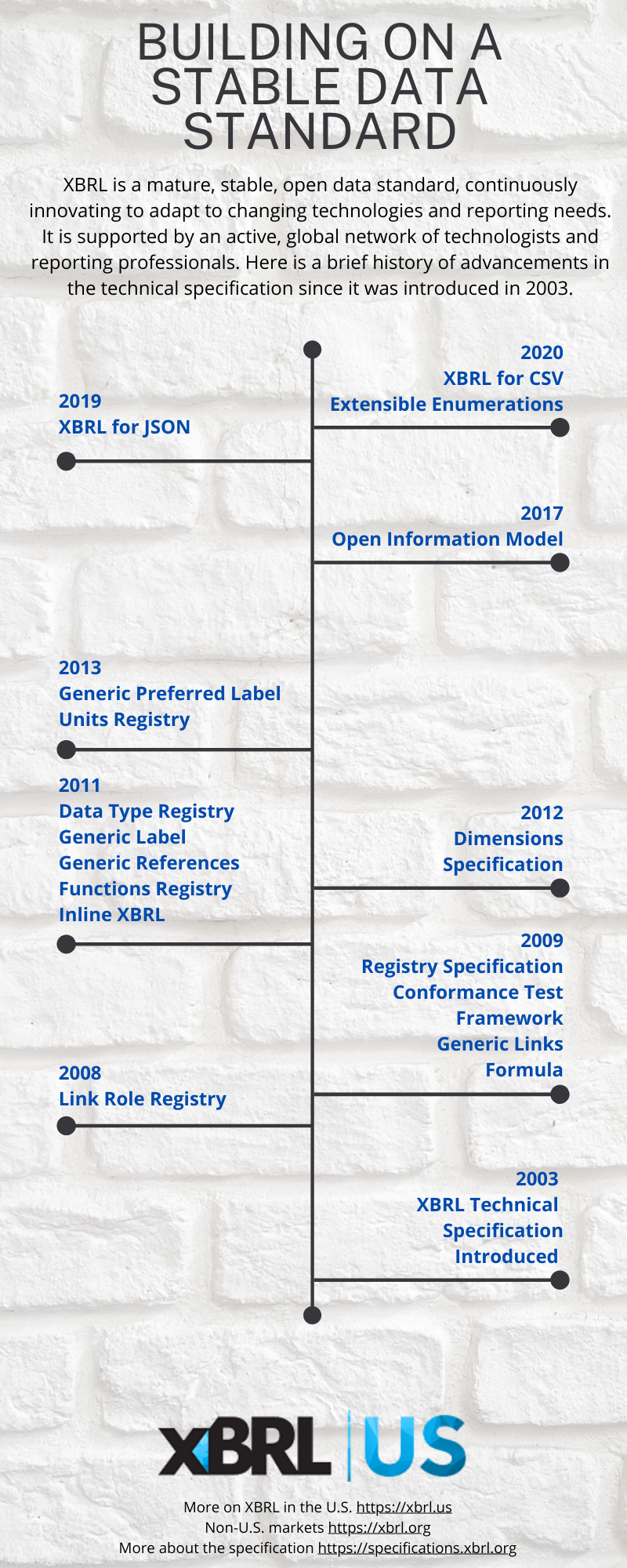

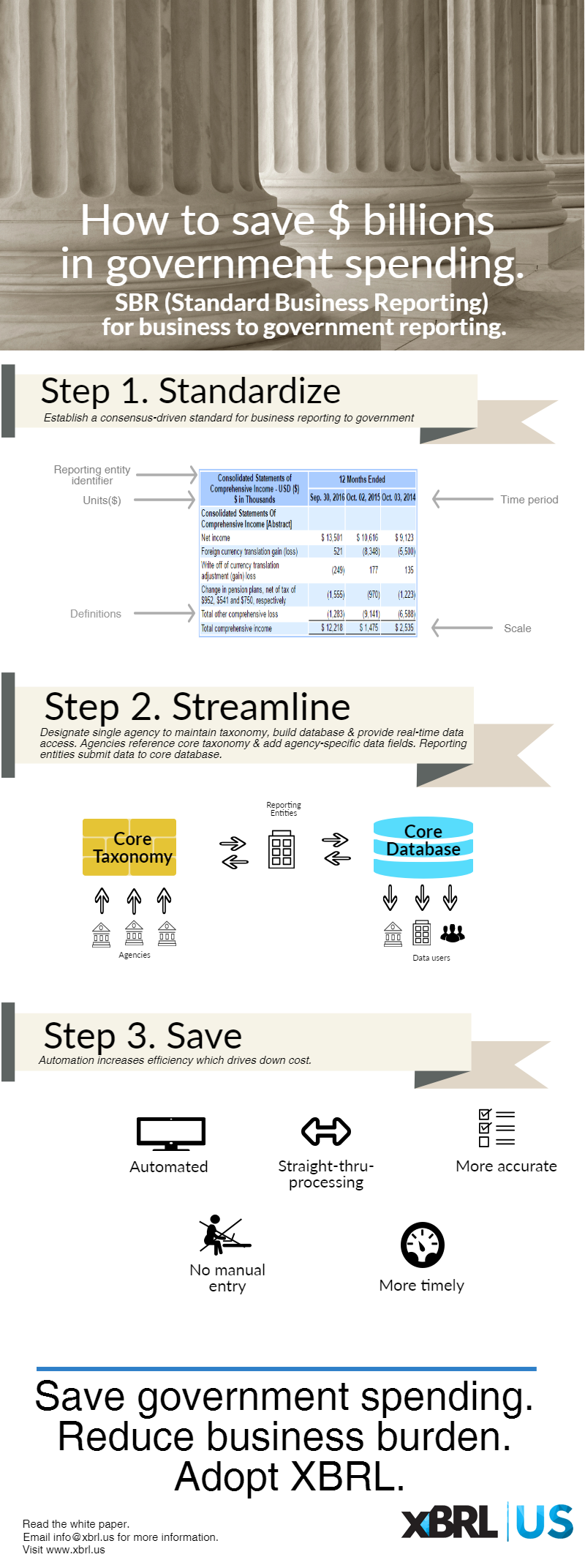
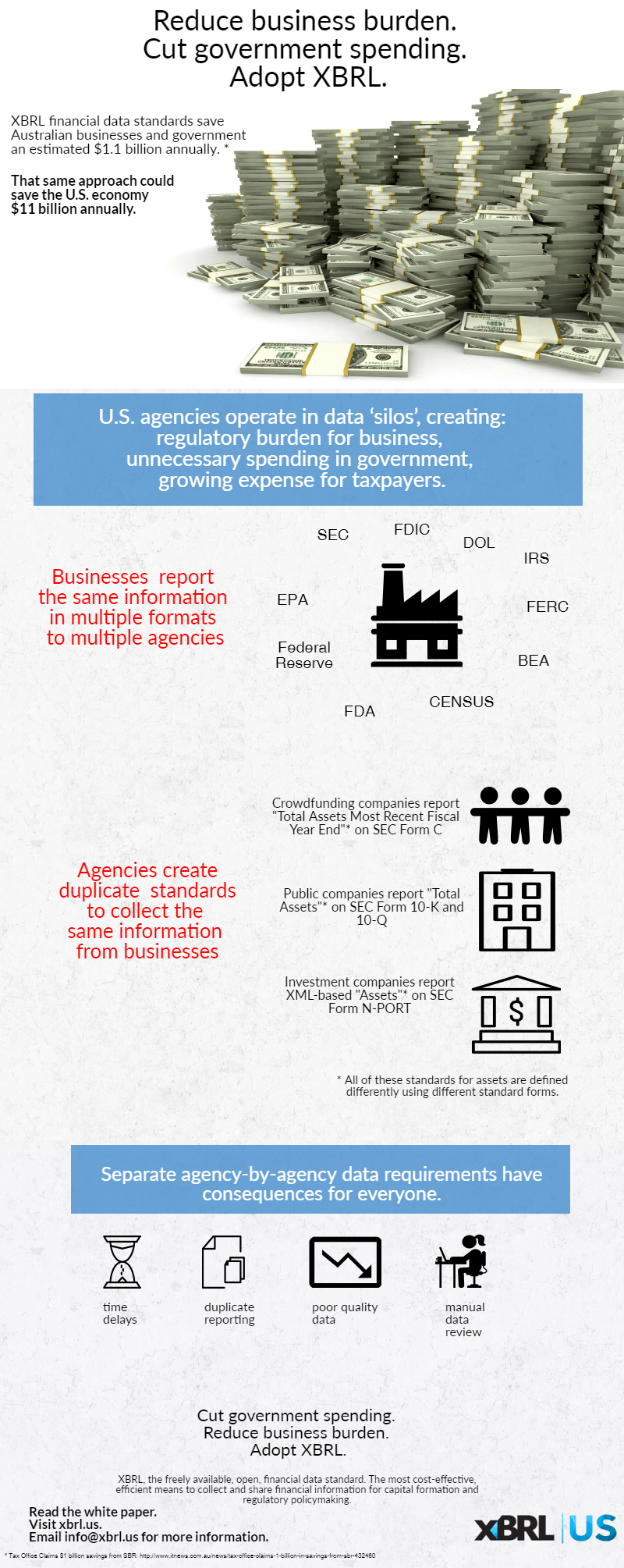
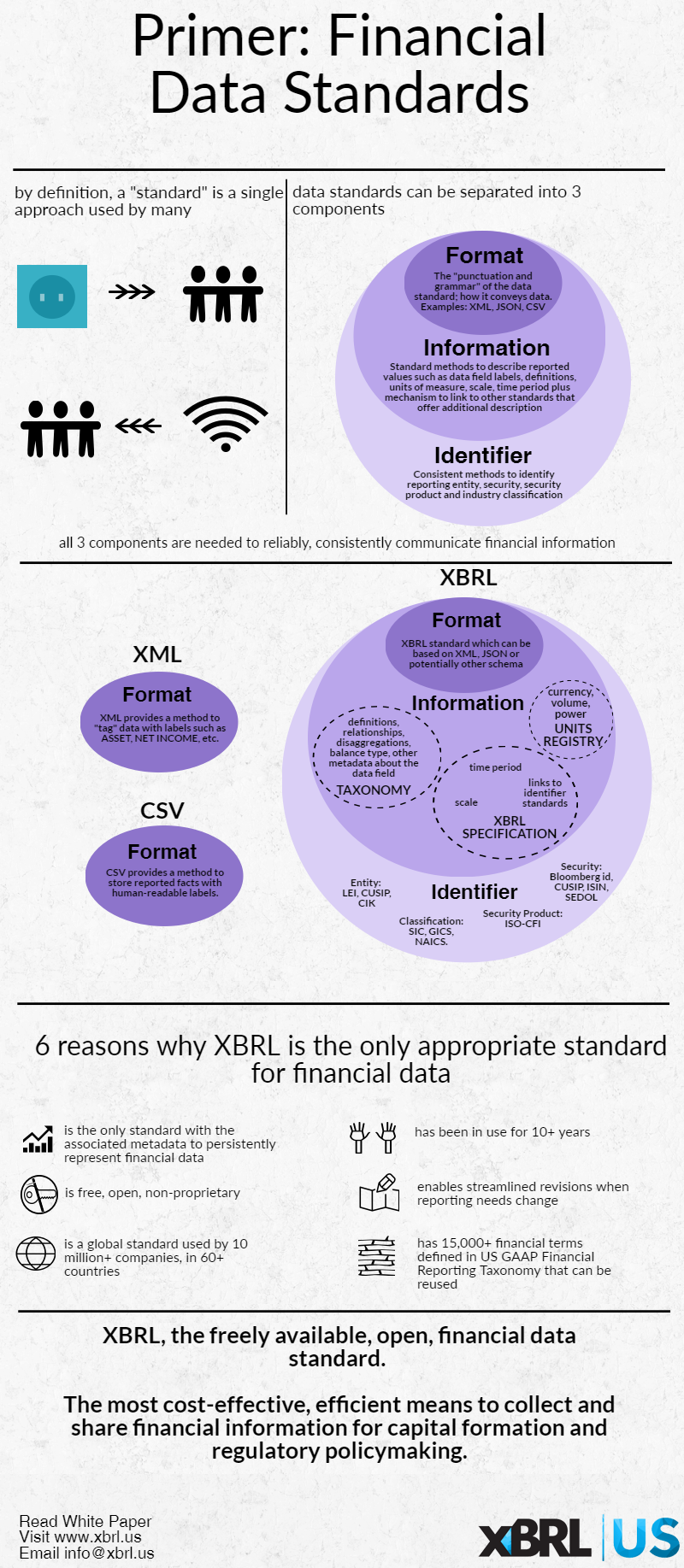
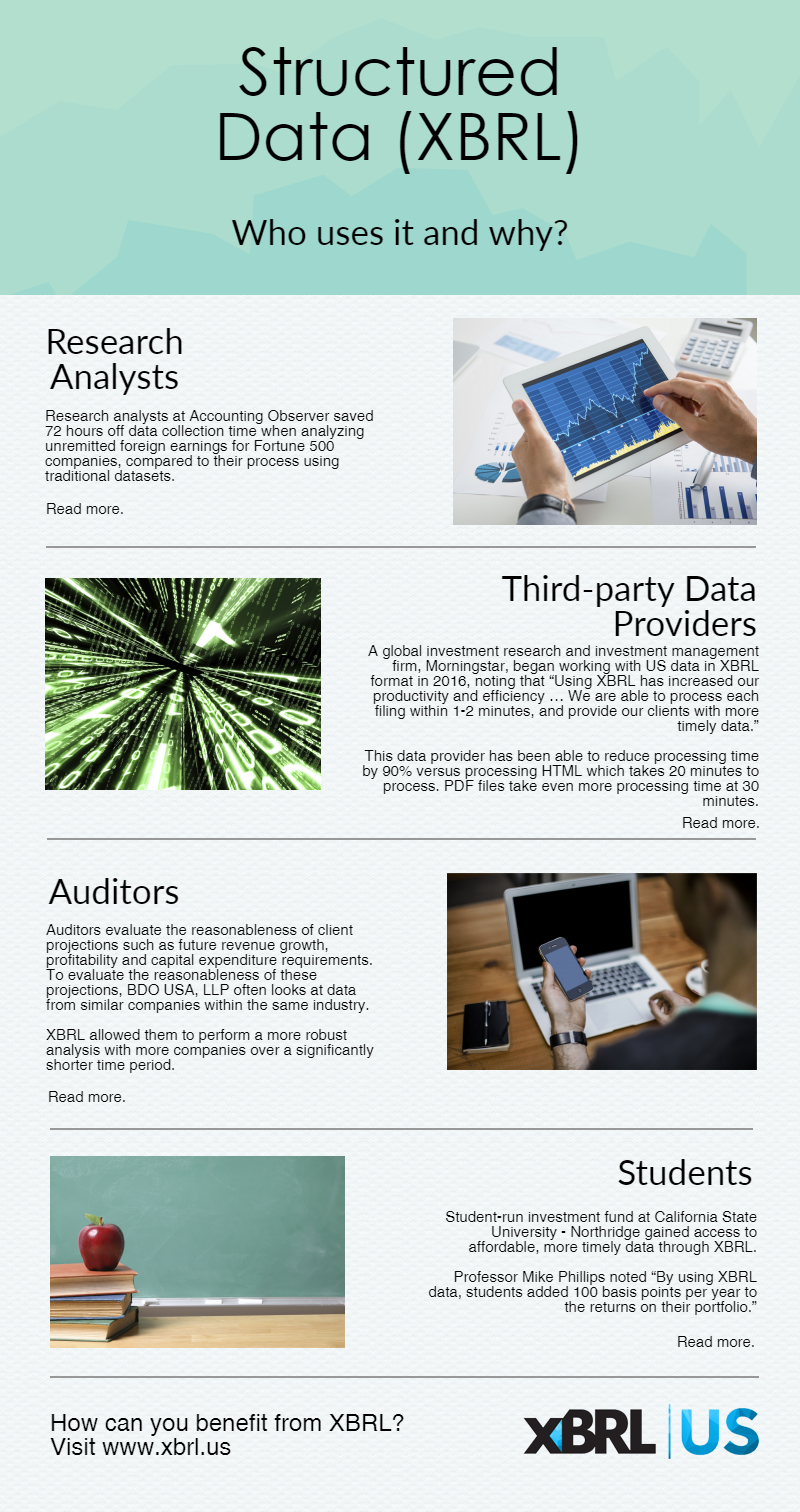
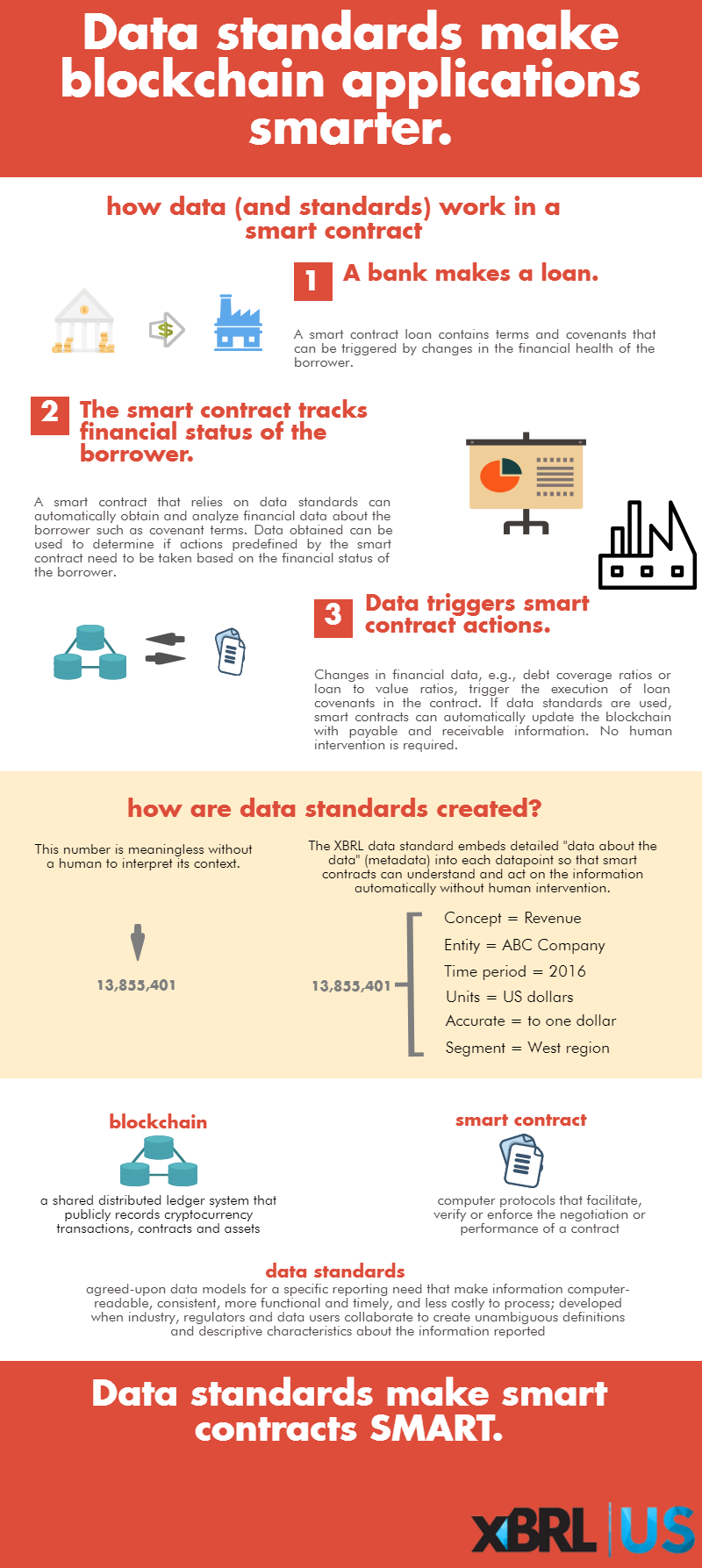





Comment
You must be logged in to post a comment.